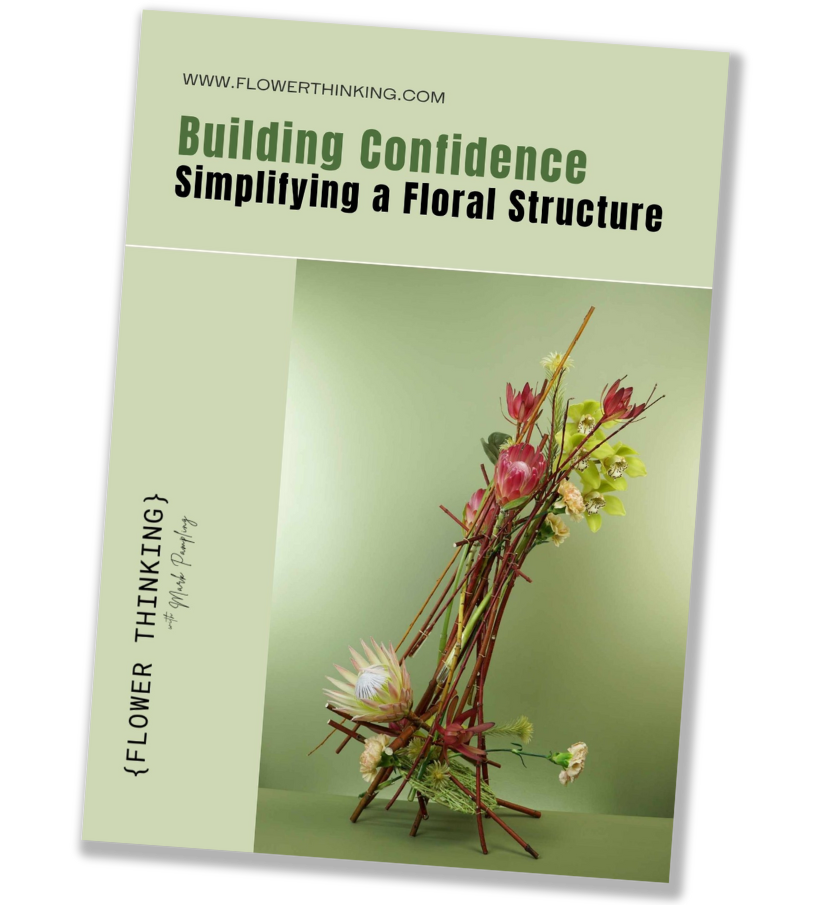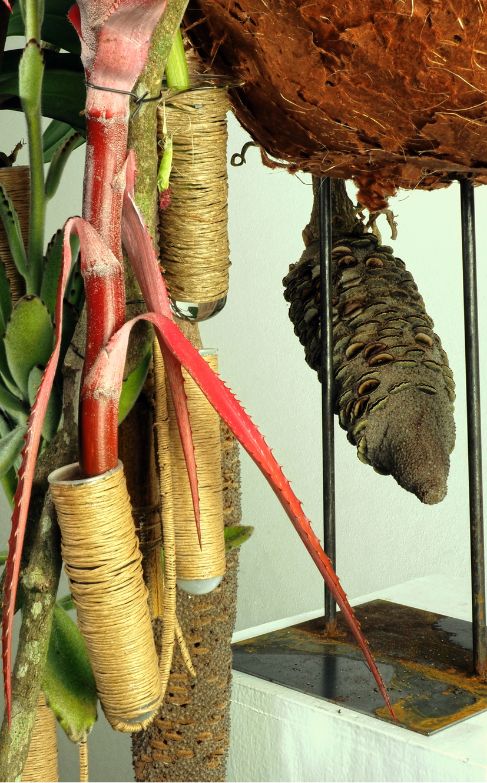
Displacement
Displacement designs have become topical for Floral Designers and Artists in recent years because they offer an opportunity to experiment with visual balance and to push the boundaries of asymmetry.
The style is often described as working away from the container. Materials are arranged so that the main area of interest is deliberately separated from the vessel or base foundation.
Key proponents of the displacement style include Gregor Lersch, Bart Hassam and Mark Pampling.

Horizontal design with the main area of interest sitting to the right of the container
Aranthera, Leucadendron, Protea cynaroides, Dianthus, Amaranthus, Ligularia, Betula, Pararistolochia
Design – Gregor Lersch
Photography – Eddie Brockwell
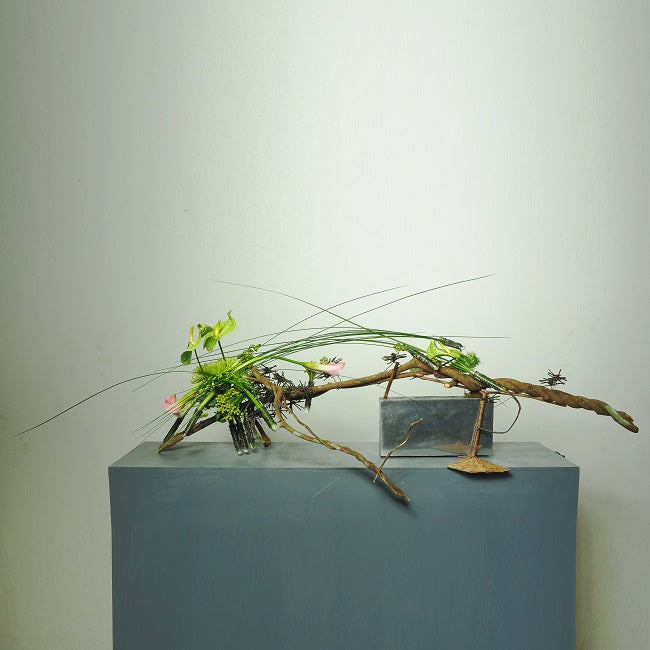
A structure of rainforest vine draped over a stainless steel vase supported by wire duck feet allows the main area of interest to be positioned away from the container.
Anthurium, Xanthorrhoea, Zantedeschia, Berzilia, Chrysanthemum, Dendrobium, Dianthus, Pararistolochia
Design – Gregor Lersch
Photography – Eddie Brockwell
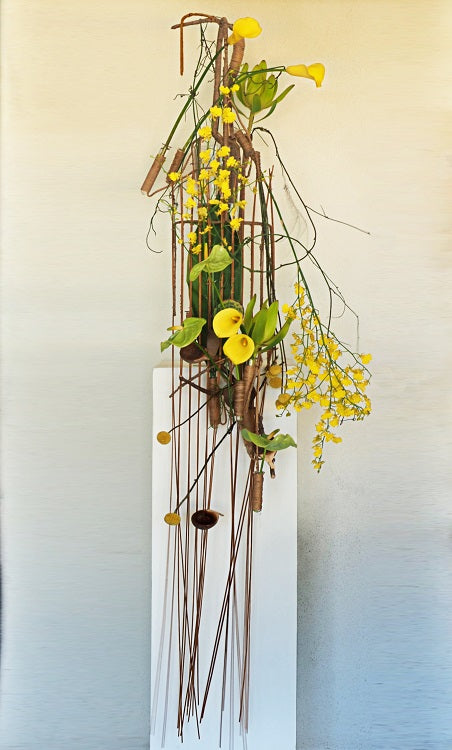
Wire mechanics allow the main focal area to hang away from the top of the vase.
Anthurium, Lecuadendron, Zantedeschia, Oncidium, Craspedia, Hakea, Cuscuta
Design – Gregor Lersch
Photography – Eddie Brockwell
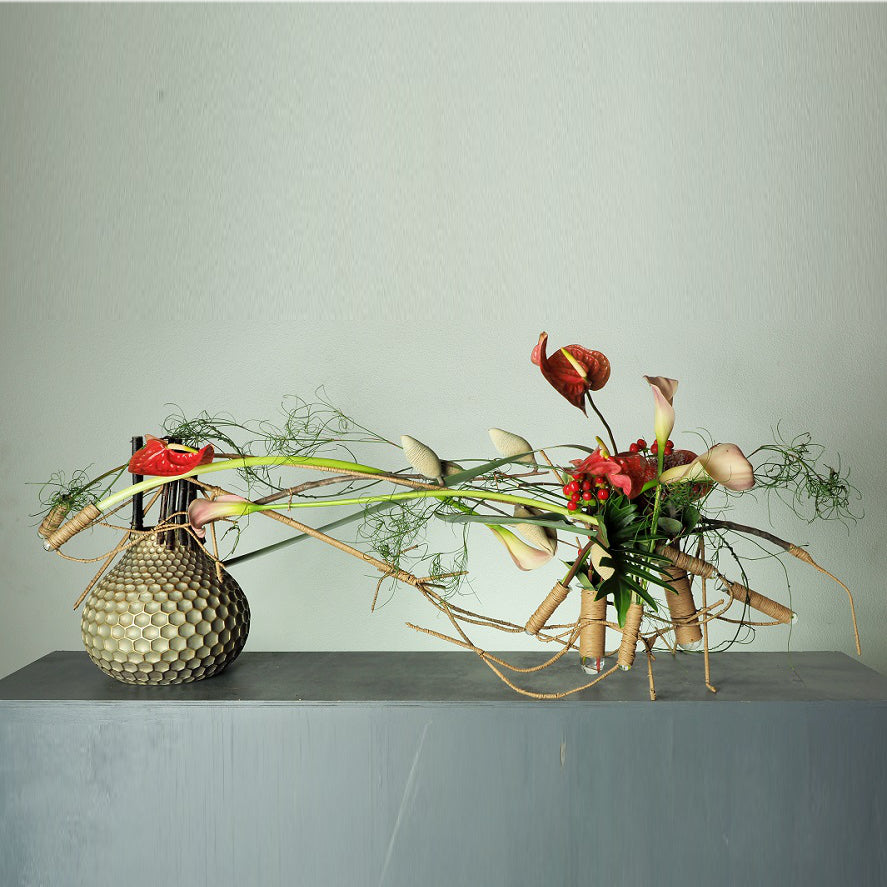
Test tubes in a network of wire arms extending from the vase place the focal area well to the right of the vase.
Anthurium, Zantedeschia, Xylomelum, Hypericum, Caustis, Philodendron, Banksia coccinea, Typha
Design – Gregor Lersch
Photography – Eddie Brockwell
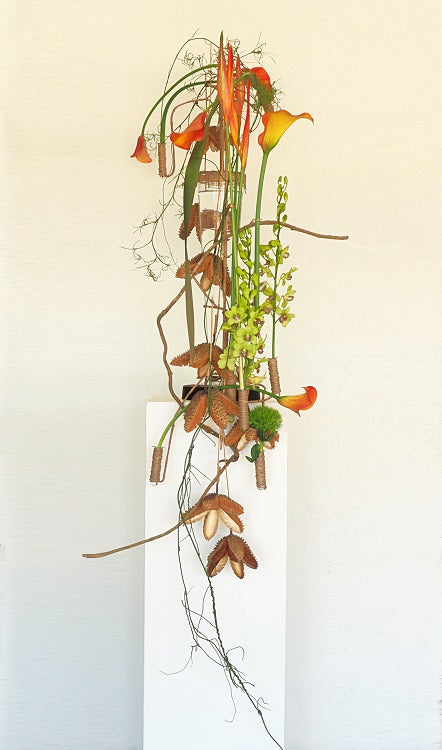
Denser groupings of materials are positioned away from the container via a discrete wire structure.
Zantedeschia, Heliconia psittacorum, Flindersia australis, Dendrobium, Caustis, Cuscuta, Dianthus
Design – Gregor Lersch
Photography – Eddie Brockwell
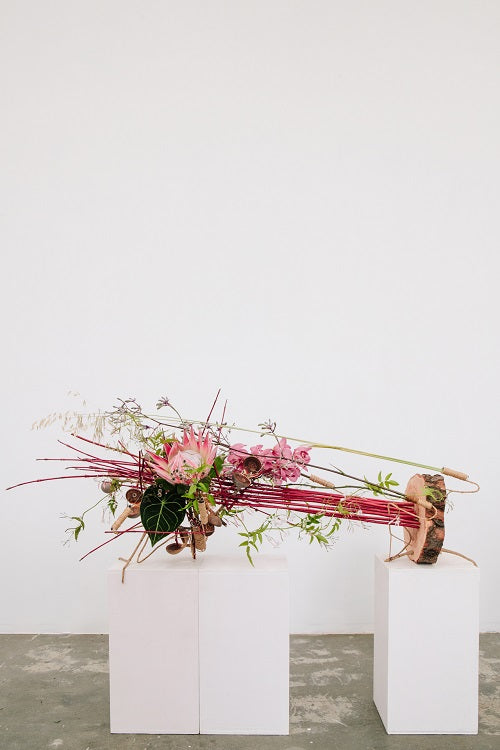
Dogwood, attached to a log base, places the focal flowers away from the point of origin.
Protea cynaroides, Cymbidium, Cornus, Hakea, Anigozanthos, Jasminum, Anthurium clarinervium, Panicum
Design – Gregor Lersch
Photography – Kai Ridley
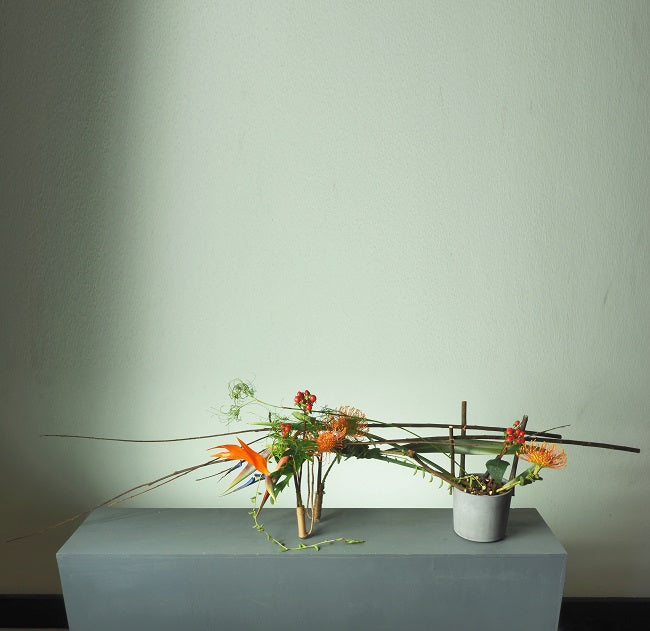
The main area of interest is supported by wires and test tubes attached to lengths of Willow that extend away from the container.
Strelitzia, Salix, Hypericum, Leucospermum, Philodendron, Caustis, Senecio, Phormium, Typha
Design – Gregor Lersch
Photography – Eddie Brockwell
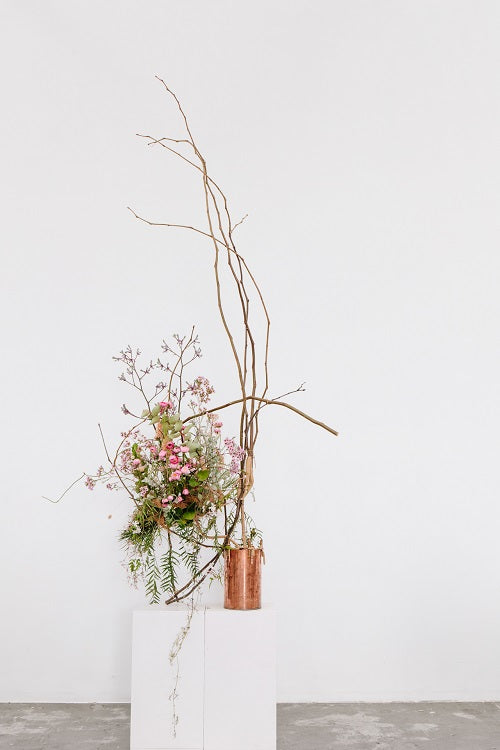
A network of branches allows the focal area to be located beside the container.
Salix, Anigozanthos, Helichrysum, Jasminum, Chamelaucium, Schinus molle, Eucalyptus
Design – Gregor Lersch
Photography – Kai Ridley
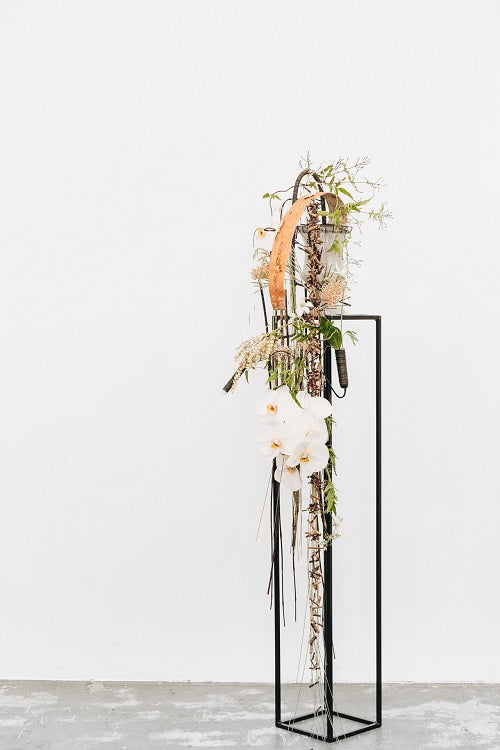
A wire stem allows the main flowers to hang far below the urn and the top of the stand that holds it.
Phalaenopsis, Jasminum, Grevillea, Andromeda, Salix, Xanthorrhoea, Betula
Design – Gregor Lersch
Photography – Kai Ridley

Strong asymmetry is achieved with a structure that places the main flowers to the far right of the container.
Protea, Dendrobium, Dianthus, Salix, Philodendron
Design – Mark Pampling
Photography – Mark Pampling

The strongest area of interest sits atop Cornus stems and a simple wire foot, away from the vase.
Anthurium, Eucalyptus, Lycopodium, Alocasia amazonica, Dianthus, Cornus
Design – Mark Pampling
Photography – Mark Pampling
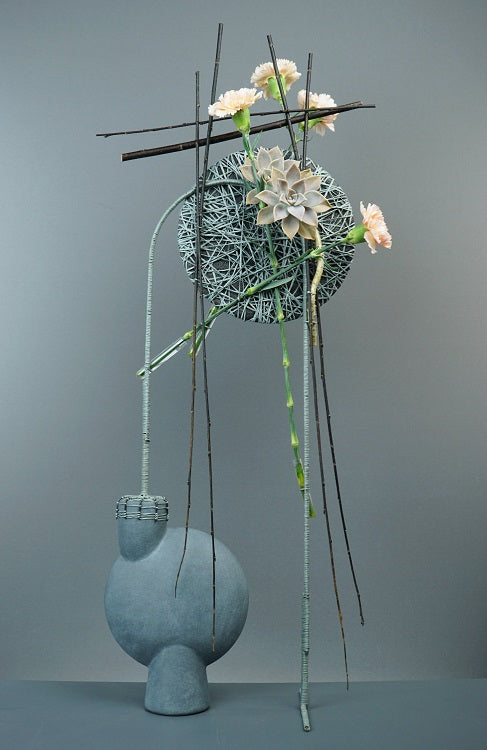
A wire stem anchored to the container’s mouth and the table enables the focal area to be positioned high and away from the vase.
Graptopetalum, Dianthus, Salix
Design – Mark Pampling
Photography – Mark Pampling
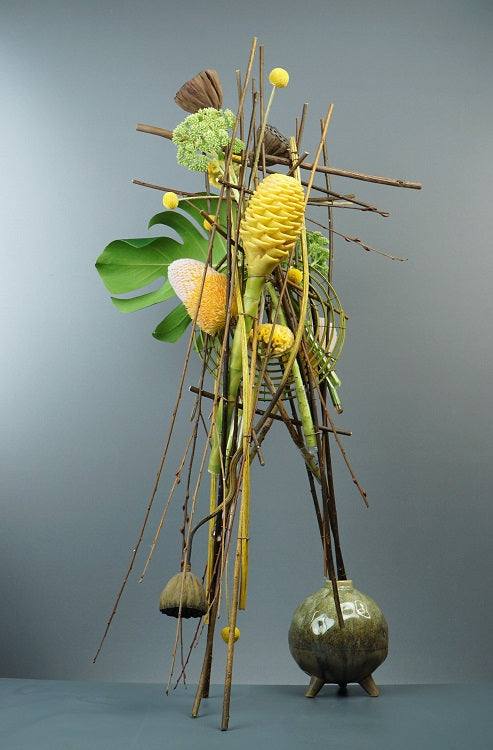
Willow legs allow the main area of interest to sit away from directly above the container.
